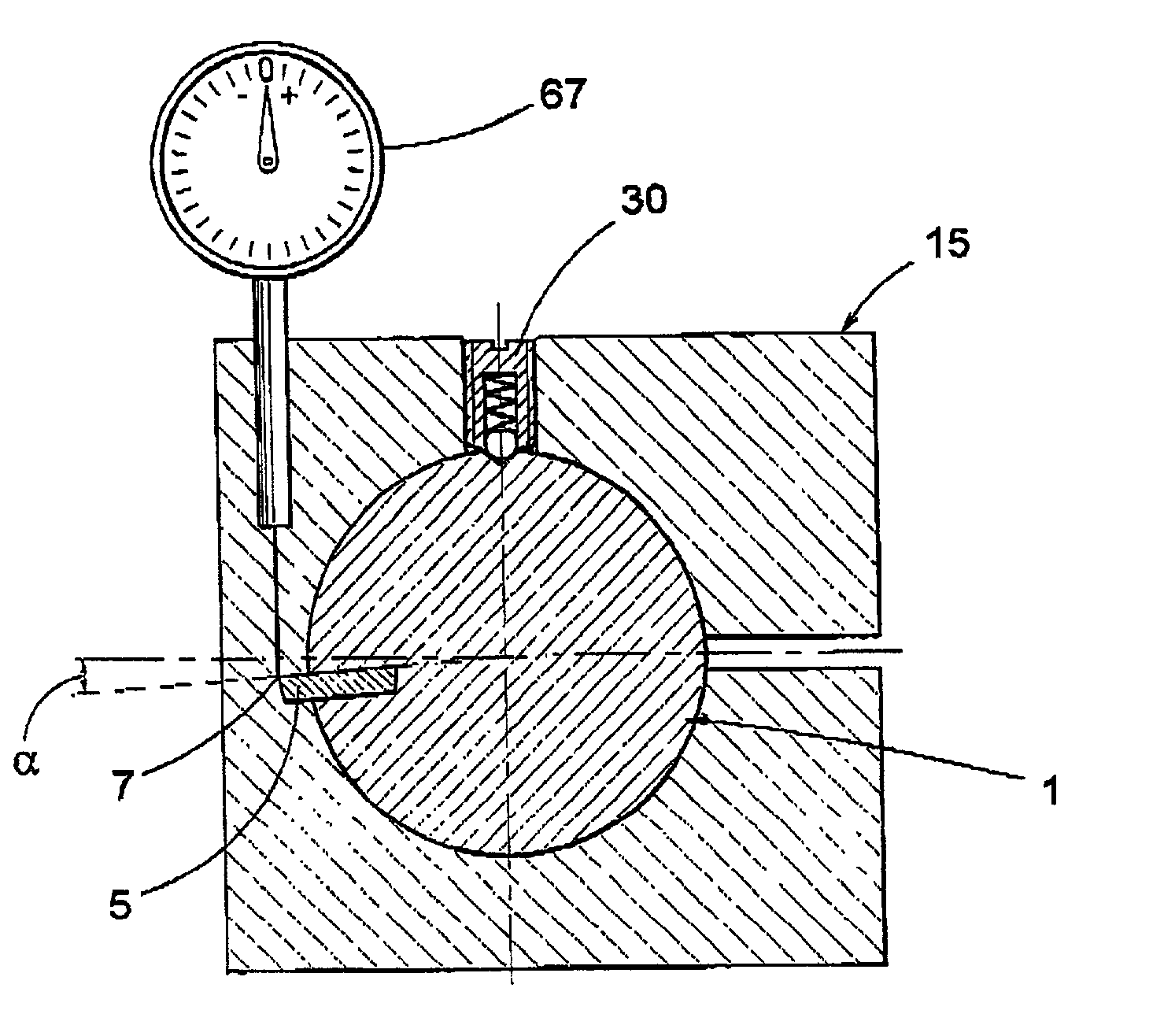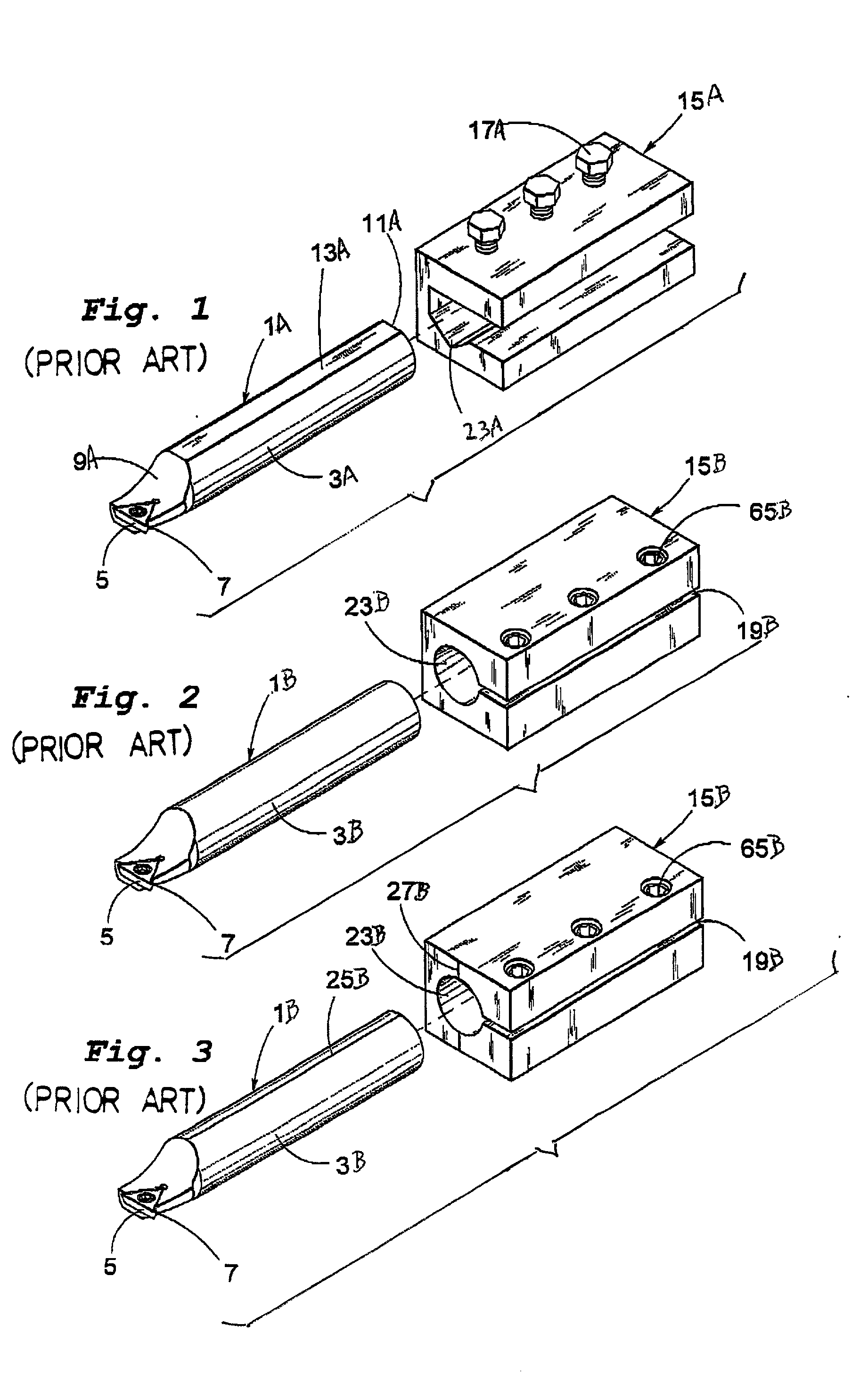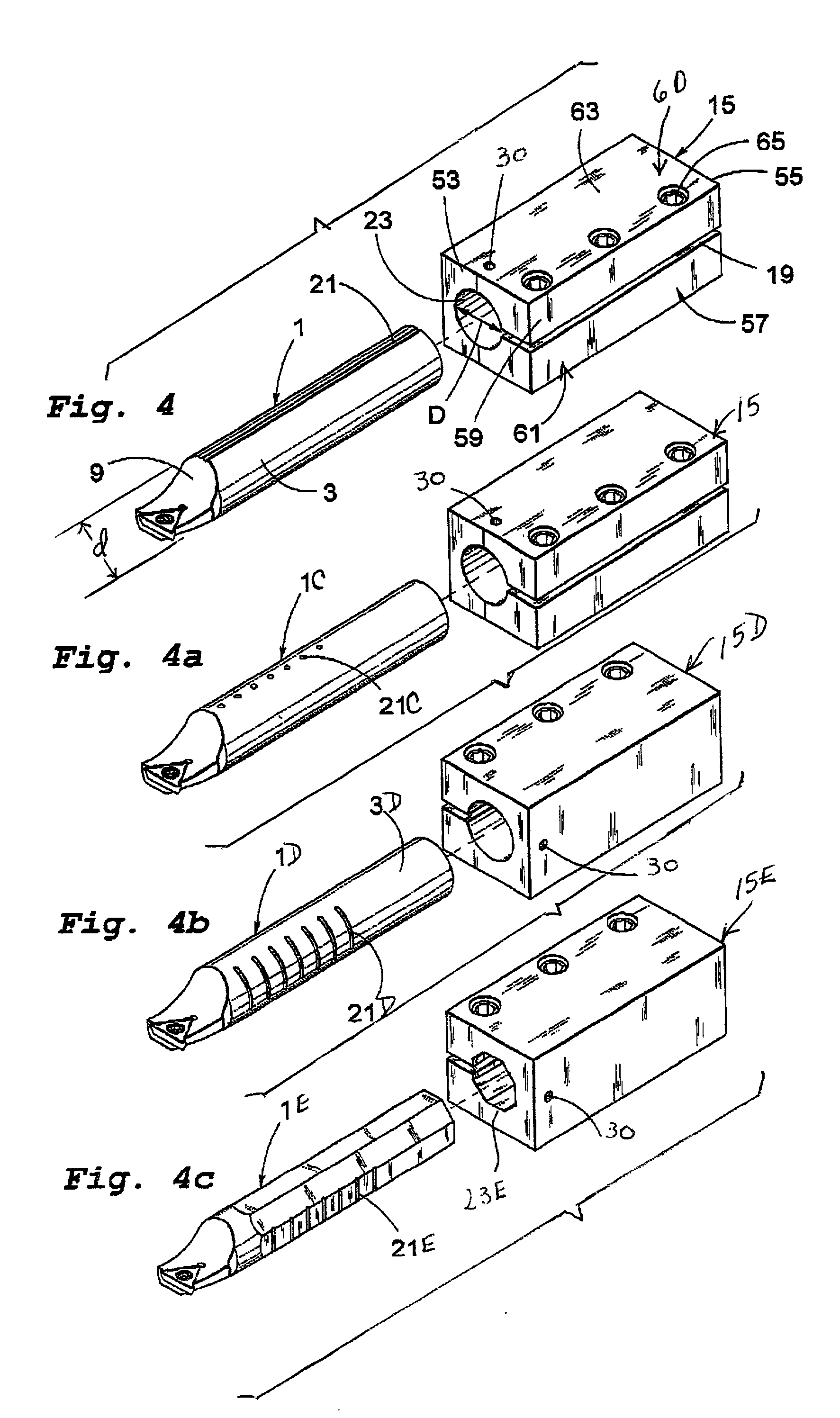Cutting, tool system and mechanism for accurately positioning a cutting edge
a technology of cutting edge and tool system, which is applied in the direction of tool holders, mechanical devices, manufacturing tools, etc., can solve the problems of limited space inside the workpiece, chip jamming, and damage to tools
- Summary
- Abstract
- Description
- Claims
- Application Information
AI Technical Summary
Benefits of technology
Problems solved by technology
Method used
Image
Examples
Embodiment Construction
[0030] FIG. 1 illustrates a typical prior art combination consisting of a cutting tool 1A, for example a boring bar, and a tool-clamping device 15A. The cutting tool consists of a substantially cylindrical shaft portion 3A with front 9A and rear ends 11A. The front end accommodates at least one cutting insert 5. The cutting tool 1A is located and secured in the tool clamping device 15A by means of at least one clamping screw 17A acting on a planar surface 13A formed on the upper side of the bar. The lower part of an aperture 23A formed in the tool block is V-shaped. This solution is commonly used but is not recommended since it gives a limited clamping force because of the restricted contact surface of the tips of the screws on the surface 13A and poor location of the bar and hence poor repeatable accuracy of the height of the cutting edge 7.
[0031] FIG. 2 illustrates another prior art clamping method in which a substantially cylindrical cutting tool 1B is accommodated in a correspon...
PUM
| Property | Measurement | Unit |
|---|---|---|
| angle | aaaaa | aaaaa |
| angle | aaaaa | aaaaa |
| angle | aaaaa | aaaaa |
Abstract
Description
Claims
Application Information
 Login to View More
Login to View More - Generate Ideas
- Intellectual Property
- Life Sciences
- Materials
- Tech Scout
- Unparalleled Data Quality
- Higher Quality Content
- 60% Fewer Hallucinations
Browse by: Latest US Patents, China's latest patents, Technical Efficacy Thesaurus, Application Domain, Technology Topic, Popular Technical Reports.
© 2025 PatSnap. All rights reserved.Legal|Privacy policy|Modern Slavery Act Transparency Statement|Sitemap|About US| Contact US: help@patsnap.com



